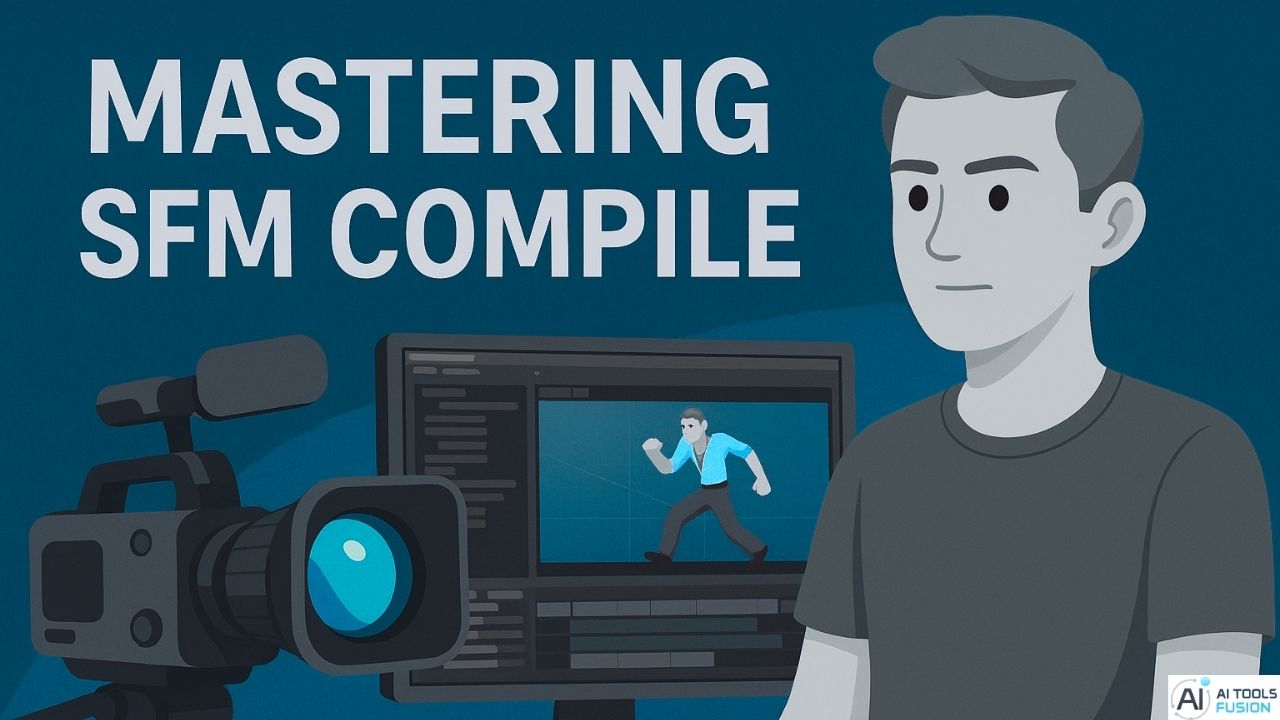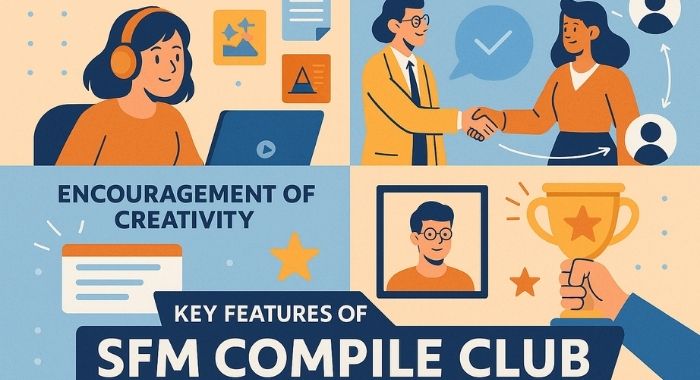SFM Compile: An Ultimate Guide for Beginners in 2025

Mastering the intricacies of Source Filmmaker (SFM) Compile is akin to unlocking a treasure trove of creative potential. For beginners eager to dive into this vibrant realm, understanding the nuances of SFM Compile is essential to transforming raw ideas into polished visual narratives. This comprehensive guide serves as an indispensable resource, meticulously crafted to demystify the complexities of SFM Compile. With clear instructions and insightful tips, this article empowers aspiring animators to navigate the compilation process confidently, enabling them to bring their imaginative visions to life with precision and flair.
What Does “SFM Compile” Mean?
Source Filmmaker (SFM) Compile is a technical process that transforms raw animation and visual data into a polished, playable format. Essential for enhancing performance and visual quality, SFM Compile encompasses rendering animated scenes, exporting 3D models, and finalizing visual elements into various usable forms. This process optimizes rendering settings like motion blur and anti-aliasing, ensuring compatibility with video editing software and eliminating issues such as flickering or stuttering, creating a seamless animation experience .
Tools Required for SFM Compile
Essential Software
For the SFM Compile process, several tools are indispensable. Crowbar, a GUI tool, is pivotal for compiling and decompiling models. Additionally, Blender Source Tools facilitates exporting models into SFM-compatible formats.
Texture Management
To handle image textures, VTFEdit is crucial as it converts textures into Valve Texture Format. Half-Life Model Viewer (HLMV) aids in previewing compiled models while MDLDecompiler assists in extracting data from existing .MDL files. Together, these tools support an efficient workflow for beginners in Source Filmmaker work.
Preparing Your Project for Compilation
Understanding SFM Compile Requirements
In mastering SFM Compile, ensuring your project is ready for the compilation process is crucial. Begin by organizing your resources, such as 3D models, textures, and animations. Utilize software like Blender or 3ds Max to format models as .SMD or .DMX files. Craft a .QC file meticulously to guide the compiler. Use tools like Crowbar for conversion, and ensure all files align with the Source engine’s expectations for efficient processing and performance enhancement.
Step-by-Step Guide to SFM Compilation
Prepare Your Project Files
To begin the SFM Compile process, ensure all necessary files are neatly organized. This includes models, animations, and textures. Use a logical folder structure, as this significantly reduces errors.
Configure the Compile Settings
Once your files are organized, access the SFM Compile interface to set project parameters. Choose appropriate file paths and rendering settings that align with project requirements, ensuring optimal quality and performance.
Execute the Compilation
Initiate the SFM Compile process by selecting the ‘Compile’ option. Observe the log for any errors. Successful compilation results in a seamless rendering output, ready for final review.
Key Features of SFM Compile Club

Comprehensive Resource Access
SFM Compile Club offers a treasure trove of resources, including exclusive tutorials, templates, and high-quality assets. These are specially curated for members, providing tools that are hard to find elsewhere. Their detailed webinars and workshops cover various topics, enhancing both the technical and creative prowess of members.
Networking and Collaboration
The club provides unmatched networking opportunities, connecting creative enthusiasts with industry veterans. Members can find mentors and engage in collaborations, fostering a community where innovation thrives. The club’s environment encourages sharing and feedback, cultivating a culture where creativity is celebrated.
Encouragement of Creativity
Through regular contests and showcases, the SFM Compile Club inspires and motivates by highlighting member success stories. This supportive community nurtures creativity and experimentation, allowing members to push boundaries and achieve new heights in their projects.
Common Errors and How to Fix Them
Model Compilation Failures
One prevalent issue is model compilation failure in SFM Compile. A common cause is incorrect file paths and file names, primarily in the QC file. Ensuring these are precise can resolve the issue. When using software like Crowbar, the compiled folder might end up empty if there are path errors, as encountered here. Diligent verification of paths and filenames before compiling can often set things right.
Visual Output Discrepancies
Visual discrepancies such as incorrect model positioning often occur even after fixing compilation errors. This may be a result of improper transformation application in modeling software like Blender. As suggested in discussions, all transformations (translation, rotation, and scale) should be applied correctly before exporting the model to SFM. Altering these settings and recompiling often adjusts the visual output to the desired state, eliminating unexpected issues in SFM Compile processes.
Rendering Issues and Solutions
Rendering black or blank outputs is another frequent problem. This usually stems from inadequate lighting or camera settings. Reassessing and optimizing your scene’s lighting and camera configurations can prevent these issues, thereby producing high-quality renderings. It is also advisable to conduct thorough test renders to catch any anomalies early on, which can simplify troubleshooting in the extensive SFM Compile process, ultimately leading to improved visual clarity and fidelity.
Optimization Tips for SFM Compile
Enhance Compile Performance
Optimizing your workflow with SFM Compile begins by breaking down complex projects into smaller, more manageable components. This approach not only streamlines the compile process but also allows for better organization within the project folder.
Effective Resource Management
Maintain efficiency by optimizing textures and models prior to compiling. Utilizing placeholder assets or simplified geometry during development can significantly reduce processing demands and compile times.
Troubleshooting and Support
Address common issues like missing textures and compile errors by consulting log files and verifying resource availability. Engaging with community resources is invaluable, providing practical solutions and support from experienced users.
FAQs

What Is SFM Compile?
SFM Compile is the process of transforming three-dimensional animations created in Source Filmmaker into a format suitable for video rendering. It is a crucial step for animators seeking to deliver polished visuals through this beginner-friendly platform. Understanding the functions of SFM Compile empowers users to optimize their video outputs effectively.
Why Is It Important?
Correctly executing an SFM Compile ensures high-quality visuals and smoother animation. Failing this step might result in subpar output, underlining the need for precision and proficiency in its execution.
Does SFM Compile Work on All Platforms?
According to details from Theia’s FAQs, SFM Compile primarily operates on Windows platforms but may not function seamlessly on others like Android due to compatibility issues with certain libraries such as Glog.
How Can One Overcome Common Issues?
To navigate common SFM Compile hurdles, users should ensure that they have the latest software updates and follow platform-specific instructions diligently. Should additional problems arise, consulting online communities or forums often proves beneficial.
Conclusion
In mastering the SFM compile process, beginners unlock a powerful toolset that transforms creativity into visual storytelling. This comprehensive guide has laid the foundational steps necessary to navigate the complexities of SFM, empowering users to transition from mere enthusiasts to skilled creators.
By understanding the intricacies of compiling, novices can now produce animations that captivate and engage audiences. As they refine their skills, the innovation potential becomes limitless.
This guide serves not just as a starting point, but as a catalyst for ongoing exploration and mastery in the dynamic world of Source Filmmaker. The journey of creation now awaits.